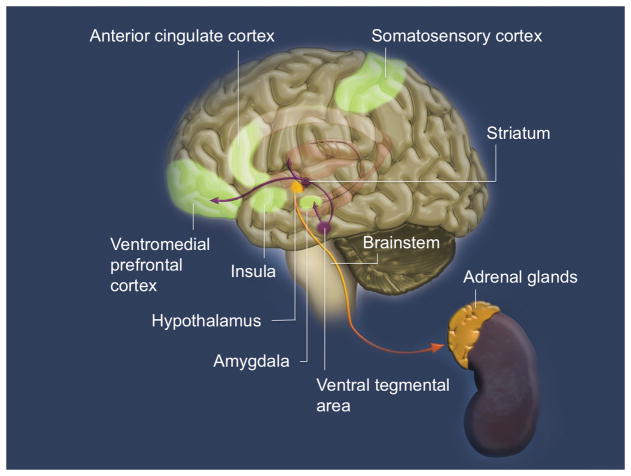Figure 1.
Empathy is implemented by a complex network of distributed, often recursively connected, interacting neural regions including the brainstem, amygdala, hypothalamus, striatum, insula, anterior cingulate cortex, and orbitofrontal cortex. The experience of empathy also involves the autonomic nervous system (parasympathetic and sympathetic branches which represent antagonist and coordinated regulation of internal states), and neuroendocrine processes implicated in social behaviors and emotional states. Thus empathy and motivation to care for others emerge from the interaction of multiple areas and circuits in conjunction with the autonomic nervous system and the neuroendocrine system.

